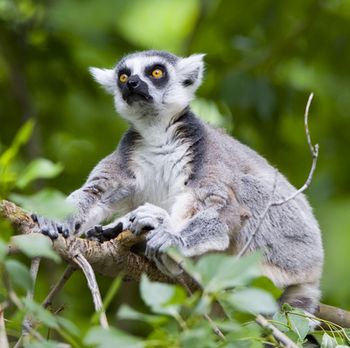|
|
Madagascar invites you to discover the joys of bird watching, river camping, exotic forests, beautiful wilderness and the endearing Malagasy people. Phenomenal in its uniqueness, this island nation has emerged as a premier destination for lovers of wildlife with its variety of ecosystems and sensational natural treasure. From dancing lemurs, flashy chameleons, vibrant baobabs trees and orchids to numerous endemic birds, Madagascar has an impressive array of biodiversity. This pearl of tourism is located in the Indian Ocean and separated from the eastern coast of the African continent by the Mozambique Channel. Madagascar is the world's fourth largest island and also addressed as the "Great Red Island" because of the existence of red laterite soils on its earth crust. Antananarivo is the capital and largest city of the country.
Geographically, Madagascar serves as the central access point over the Indian Ocean and spread over an area of 587,040 sq km. The topography of the island can be roughly divided into five distinct regions. To start from the eastern side, the low-lying coastline here is strikingly straight and doesn’t support any natural harbour. Then the Tsaratanana Massif region at the north of the country that boasts of the highest Mt. Maromokotro at 9,450 ft/2,880 m comes. It also possesses a natural harbour at Antsiranana and the attractive island of Nosy-Be. The central highland of Madagascar includes the Anjafy High Plateaux, the Ankaratra Massif, the Ivakoany Massif and the Roiniforme Massif. It is the most populated area and home to large water bodies like the Lake Itasy and Lac Alaotra. The broad alluvial plains near the west coast offers a number of fine harbours sheltered from natural hazards and is ideal for agriculture. The southwestern part of Madagascar is dominated by a desert land. Madagascar has basically two seasons that comprises of a hot, rainy season from November to April and a cooler, dry season from May to October. Overall the weather conditions go tropical along the coast, temperate inland and arid in the south.

|
The starting point of Madagascar’s historical journey still remains unclear. It is believed that the Arab traders were the first ones to have arrived to the islands in seventh century after the Malay people. Diego Dias, a Portuguese navigator, was probably the first European to see Madagascar in 1500. French settlements began in seventeenth century and by this time there were a number of small Malagasy kingdoms, including those of the Antemoro, Antaisaka, Bétsiléo, and Merina. The island became a French protectorate in 1885 and during World War II the British occupied Madagascar. It remained an autonomous republic within the French Community since 1958 and finally achieved independence on June 26, 1960.
After years of political turmoil and coup attempts, multiparty political system was established in Madagascar in 1990. Nowadays it is governed on basis of the constitution adopted in 1992 and is led by a president, who is elected through popular voting for five years. The president appoints a prime minister on the basis of nomination by the National Assembly. The 160-seat National Assembly is a part of bicameral parliament of Madagascar and the members are directly elected by popular vote to serve four-year terms. The other house is Senate with 100 seats and the members are appointed by the regional assemblies and the president. The independent judiciary comprises of the Supreme Court and the High Constitutional Court. Madagascar has improved economically in last few years by accepting privatisation and market liberalisation policies. Tourism, textile and light manufacturing exports, agricultural products, production of vanilla and mining are the mainstay of the financial structure of Madagascar.
 Baobab trees
Baobab trees
|
|
|

